Want to grow bigger and juicier strawberries than ever this year – and not end up harvesting tiny berries with little to no flavor?
Anyone who plants or grows strawberries knows the incredible anticipation a new growing season brings. That this might finally be the year that those strawberry plants actually take off and produce an amazing harvest. Unfortunately, for many gardeners, it can be a frustrating challenge.
Let’s face it – there is nothing more discouraging than pulling back the bright green leaves of your strawberry plants only to find strawberries that are ripe, but miniature in size. Are they not getting enough water? Or enough or too much fertilizer? Is it the soil they are growing in?

As it turns out, when it comes to growing bigger and juicier strawberries, there are a few simple reasons your crop might not be turning out as big and plump as you would like. And the good news is by simply taking care of 3 major needs for your plants – you can and will grow bigger berries!
Before we get to those 3 simple needs, lets first take a look at why your current plants might be struggling to grow those larger, tastier berries. And that all starts with making sure you are growing the right type of strawberries.
How to Grow Bigger Strawberries
Why Are My Strawberries Small?
There are several reasons why strawberries remain small throughout the growing season, and the first one may be as simple as the strawberry variety that is in your garden.
Those big, gigantic strawberries that are for sale at grocery stores and farmers markets are almost always June-bearing strawberries This variety is known for its large fruits that commonly grow to a height of over 2 inches.
However, there are also varieties of strawberries that are everbearing. And although this variety can produce all summer long and provide a consistent amount of berries, they are quite smaller in size.
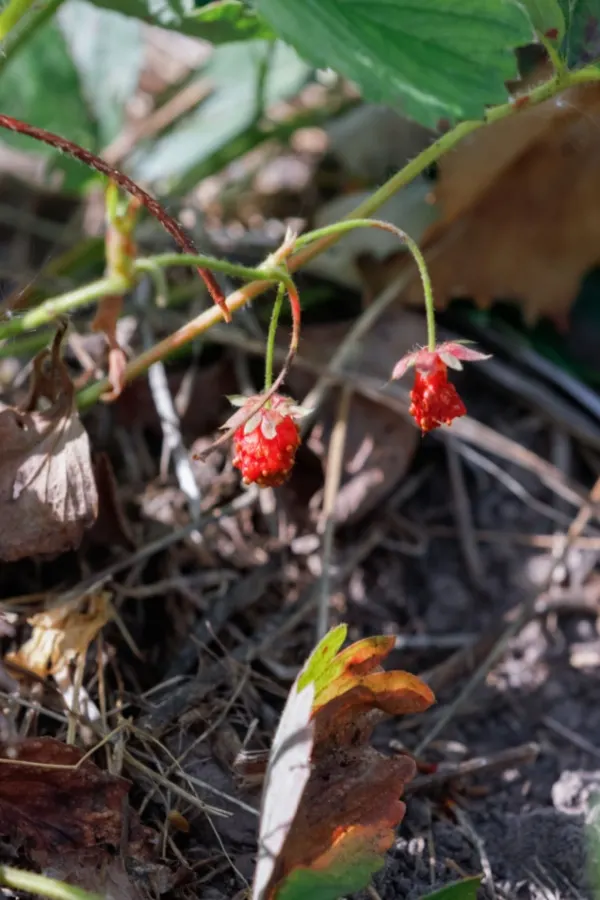
Both varieties have their place. Everbearing are great for small berries for topping pancakes, ice cream or even fresh eating. And they produce all season long. But if it’s massive berries you are looking to grow – you need to make sure you are planting and growing June-bearing plants! (Affiliate Link: June-Bearing Strawberry Plants)
Adverse Weather
Although the variety of the strawberry plant makes a huge difference in the size of the fruit, there are a few other natural reasons why your strawberries might not be growing big – even if you are growing June-bearing plants. And one of the biggest natural factors of all is your climate and weather for the season.
Both heat and drought will hinder a strawberry plants ability to produce. That is why they thrive in the cooler temperatures of spring.
If the soil heats up too much the shallow roots of the plants become stressed, causing the inability of the fruit to become large. In addition, if they become dehydrated, both the foliage and fruit will begin to wilt.
Listen In Below To Our Podcast On The Secrets To Growing Strawberries!
The lack of water or an inconsistent amount of water will also result in small strawberries. Not to mention, even if the fruit matures enough and ripens it will be more firm and virtually tasteless.
If you are having an extremely hot and dry season, you will need to water. You can also help by providing a bit of shade with a shade cloth for your berries in the mid-day sun. This can be easy if you have a small plot, and a bit more difficult if you have a large patch!
No matter the weather conditions, if you are growing strawberries in pots, plan on watering more often than if they are in the ground. Plants in containers naturally need more assistance as they are unable to develop roots into the ground to seek water on their own. See our article: How To Grow Strawberry Plants in Pots and Containers.
Pollination
Just like most fruit trees, bushes and plants, strawberries are dependent on pollination in order to reach their maximum size. Although strawberries have both male and female flower parts and can self-pollinate with the help of ideal weather conditions, for complete pollination and to grow big berries, they need a little help.
Honeybees or bumblebees are usually necessary to allow for full and complete pollination. Excessive rain or consistent periods of high wind will keep bees grounded and away from those delicate flowers during the crucial pollination period. As will spraying with insecticides as it can kill off the bee population quite easily.
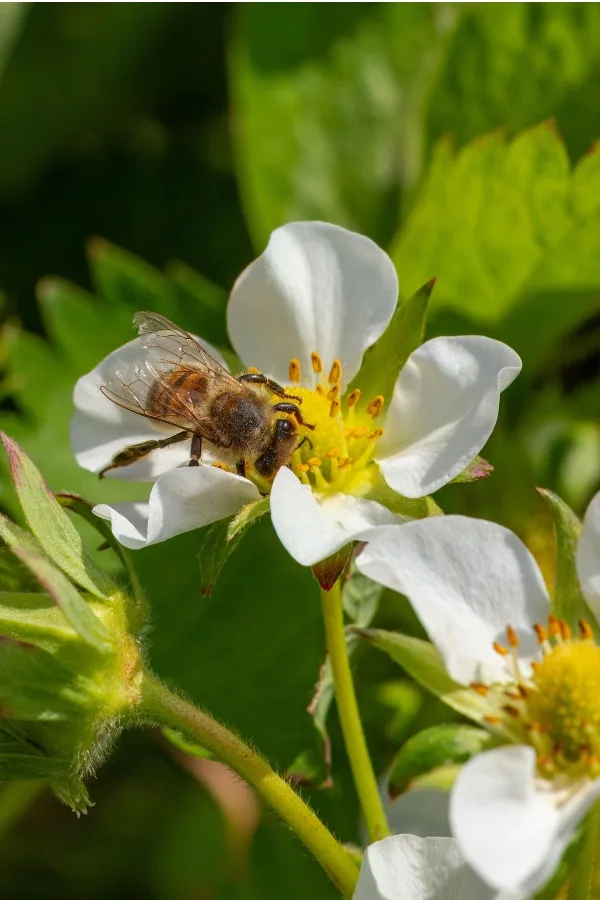
Over-Crowded Strawberry Beds
Once your strawberry plants are in the ground, it’s important to give them enough natural resources so they can produce big strawberries. If they are overcrowded and are continually deprived of nutrients, the harvest total and size will be significantly smaller.
But overcrowding is not just about having too many strawberry plants in one location. In fact, more often than not, weeds are the biggest culprit of suffocating a healthy strawberry plant. Because of this it’s vital to keep your beds weed free and mulched.
Strawberry plants themselves can overtake a space when they put out multiple runners throughout the years. Runners take a lot of the plant’s energy to produce, so in the first two years of life it’s best to always remove the runners.
This will allow the plant to concentrate its effort on fruit production. Then during the third growing season some of the runners can be used to propagate new plants.
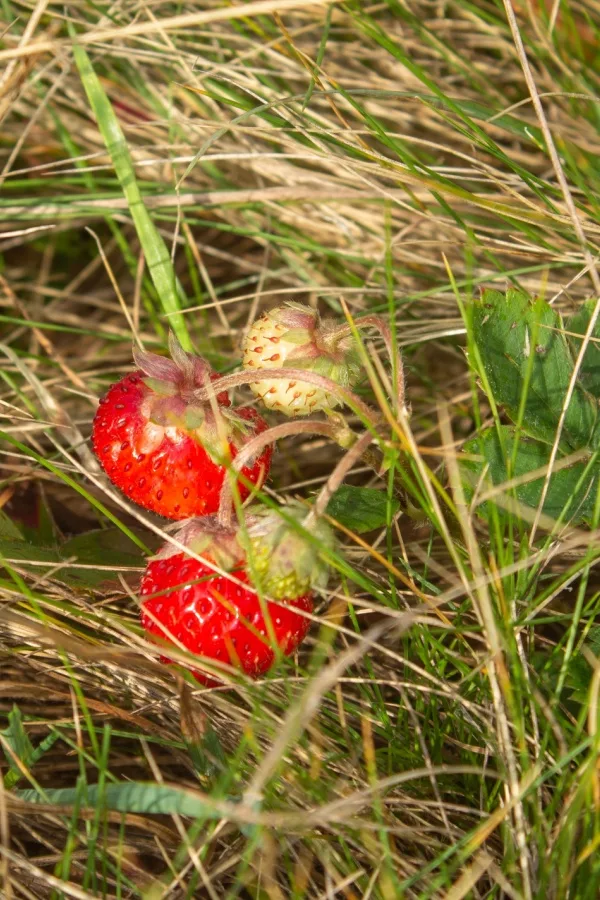
How to Grow Bigger Strawberries – The 3 Simple Secrets To Bigger, Juicier Berries
So what can you do to help your strawberries grow big and flavorful this year. Although you can’t control adverse weather conditions such as drought, sun and heat, there are a few things that will help your plants produce bigger berries.
#1 Plant For Success
When planting for big berries, first make sure you have a June Bearing variety. And when you do plant, do so that the crown of the strawberry is in an area that gets full sun (at least 8 hours per day). Once the plants are in the ground be sure to mulch around the plants for weed control and to help conserve moisture.
Always be sure to water your plants on a consistent basis. Strawberry plants require around 1 to 2 inches of water every week. Although these numbers will vary depending on the soil type and climate, it’s important they have water regularly. If not, the berries will simply not have the moisture to plump up.
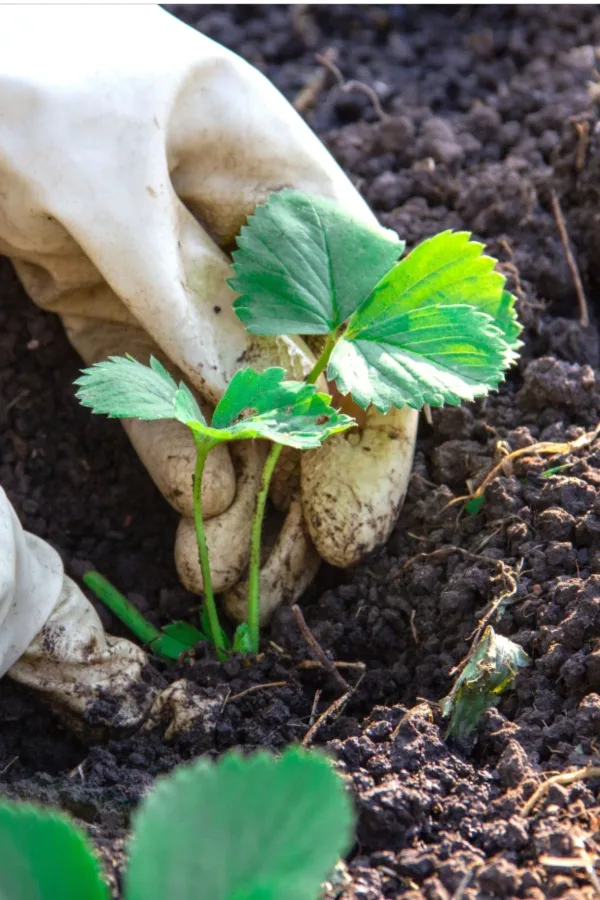
#2 Fertilizing Your Berries Correctly – How to Grow Bigger Strawberries
Fertilizing your berries is extremely important. But it’s vital to do it at the right time and with the right fertilizer. If you fertilize a strawberry plant when the flowers are blooming, you will actually hinder the fruit production. Instead, all of the energy will be sent to the green foliage.
In addition, it’s also important to not use a fertilizer that is high in nitrogen. If excessive nitrogen (the N number in the N-P-K fertilizers) is added to the soil, the strawberry plants will likely be quite green and lush, but the plant will produce fewer and smaller berries.
How To Fertilize For Big Berries – How To Grow Bigger & Juicier Strawberries
When it comes to fertilizing strawberry plants correctly to get big strawberries, it’s a two-fold process. The first time to apply fertilizer is early in the growing season right before or as they come out of dormancy. Do this right as they show the first sign of green growth, but never when they have flowers or berries.
In early spring, the plants are ready to begin storing power in their root systems for fruit production. And when applied just as they start to grow, the nutrients are absorbed for better production.
It is best to use a fertilizer mix that has a slightly higher amount of Potassium (K). Potassium aids greatly in fruit production and is excellent for helping to grow more plentiful and larger berries. Product Affiliate Link: Performance Organics Edibles Plant Nutrition Granules.
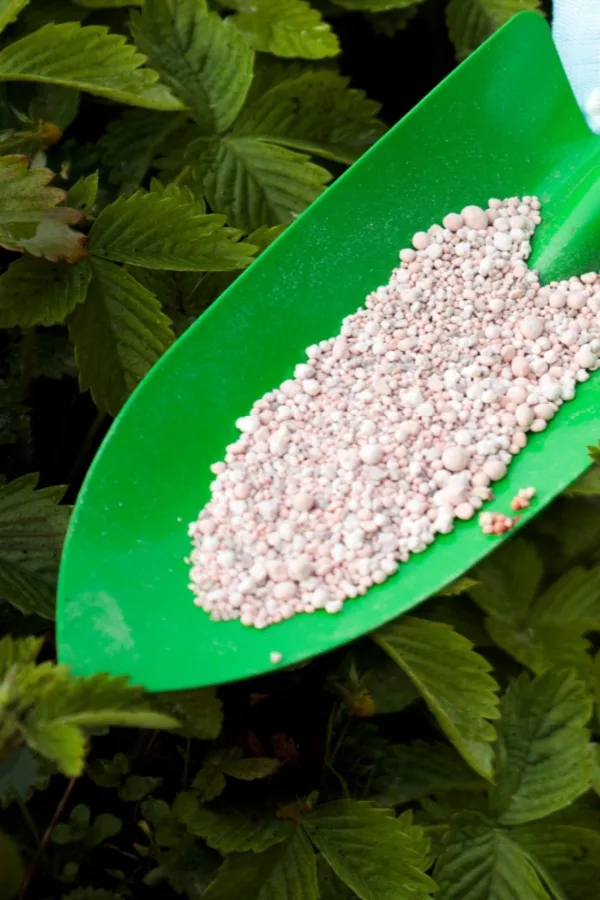
The second time to fertilize is in mid summer when the berry harvest is over. Just be sure to do this before fall as to not cause unwanted late growth. Here again, you can use the same fertilizer to help the plants recover and prepare for next year.
It’s important to remember to never fertilize your crop when it is fruiting. It may seem like a good idea to give plants nutrients as they produce, but the energy can actually cause the plants to stop bloom production to concentrate on foliage growth.
#3 Provide Adequate Space For Growth – How To Grow Bigger & Juicier Strawberries
Last but not least – give your plants room and don’t let them become crowded! As the plant grows the first two years – cut off any runners. During year three, allow a few of the runners to root and establish during the growing season. This will allow the plants to have enough room and resources to grow healthy big berries.
However, be aware that strawberries produce at their peak for only 3-4 years. When strawberries start to age, they lose strength and simply can’t produce like they used to. This is why starting new runners during year three can keep your plants young, strong and healthy.
Here is to growing bigger and juicier strawberries in your garden this year!
Simple Garden Life
Follow Our Facebook Page For Even More Great Tips! Simple Garden Life Facebook Page
Simple Garden Life is a website dedicated to keeping gardening fun, simple and enjoyable! We publish two new articles each week along with a new garden podcast episode every two weeks. This article may contain affiliate links.
